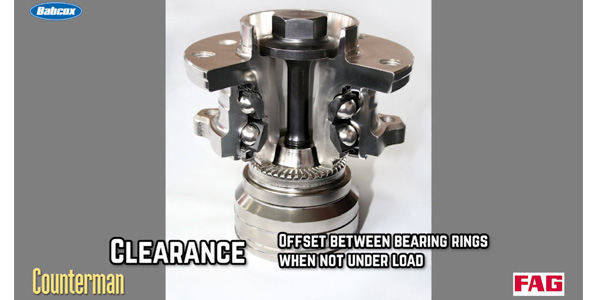This video is sponsored by FAG.
In a recent Schaeffler webinar, ASE-certified technician Roger Gillette talked about why it’s important to set the proper clearance and play during installation of wheel bearings.
Bearing clearance is a measurement of how ring bearings can be offset against each other in a radial direction – up and down – and in an axial direction – side to side – without a load, meaning in their uninstalled condition.
Bearing play is a measurement of how the inner ring moves in relation to the outer ring – in both radial and axle directions – when they’re placed under load on the vehicle. Both of these measurements are preset by the design.
Setting the bearing clearance ensures that the rolling elements are in the correct position, because the clearance is going to change once the wheel bearing is installed. If the bearing is installed too tight – meaning there’s not enough play – it’s going to increase the friction and generate excess heat, causing the bearing to break down prematurely. If the bearing is installed too loose – meaning there’s too much play – the load won’t be evenly distributed across the rolling elements, and that can cause premature failure as well.
The bottom line for your installer customers is it’s critical to follow the manufacturer’s setting specifications when installing new bearings on a vehicle. In the next video, we’ll talk about the function of bearing seals, choosing the right one, and why seals fail.









